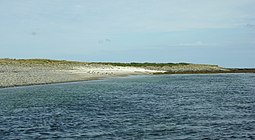
Rousay is a small, hilly island about 3 km (1.9 mi) north of Mainland, the largest island in the Orkney Islands of Scotland. It has been nicknamed "Egypt of the north", due to its archaeological diversity and importance.

Egilsay is one of the Orkney Islands in Scotland, lying east of Rousay. The island is largely farmland and is known for its corncrakes and St Magnus Church, dedicated or re-dedicated to Saint Magnus, who was killed on the island in 1117 by an axe blow to the head. For hundreds of years the story of St. Magnus, part of the Orkneyinga saga, was considered just a legend until a skull with a large crack in it, such as it had been stricken by an axe, was found in the walls of St. Magnus Cathedral in Kirkwall.

Wyre is one of the Orkney Islands, lying south-east of Rousay. It is 311 hectares (1.20 sq mi) and 32 metres (105 ft) at its highest point. It is one of the smallest inhabited islands in the archipelago.
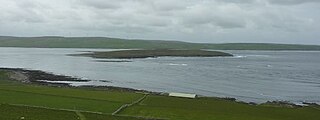
Eynhallow is a small, presently uninhabited island, part of Orkney, off the north coast of mainland Scotland.
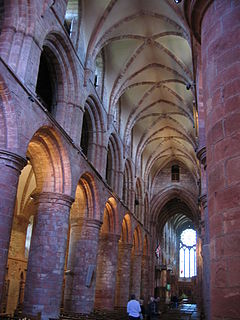
The Bishop of Orkney was the ecclesiastical head of the Diocese of Orkney, one of thirteen medieval bishoprics of Scotland. It included both Orkney and Shetland. It was based for almost all of its history at St Magnus Cathedral, Kirkwall.
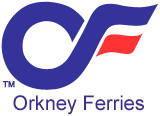
Orkney Ferries is a Scottish company operating inter-island ferry services in the Orkney Islands.

Kili Holm is a tidal island in the Orkney Islands, linked to Egilsay. Unusually, like its neighbour Egilsay, it may have a partly Gaelic etymology, in this case from cille meaning a monk's cell. This may make it another “Papey” or island of the papar or culdees.
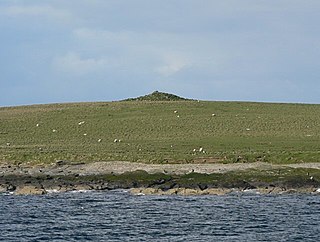
The Holm of Huip is a small island in the Orkney Islands, in Spurness Sound to the north west of Stronsay.

The Holm of Faray is a small island in Orkney, Scotland, near Faray and Westray, which it lies between. Together with its neighbour Faray, it is designated a SSSI due to its importance as a haul-out site and breeding area for grey seals.

Rendall is a parish on Mainland, Orkney, Scotland. It is in the north west of the island and lies east of the parishes of Birsay and Evie and north east of Harray. The island of Gairsay is also in the parish.
There are numerous islands containing the word holm, mainly in northern Europe. In many cases the name is derived from the Old Norse holmr, meaning "a small and rounded islet". These include:
Rinyo was a Neolithic settlement on Rousay in Orkney, Scotland. The site was discovered in the winter of 1837–38 on the lands of Bigland Farm in the north east of the island at grid reference HY439322.

Trumland is a Category B listed house and associated estate on Rousay, in Orkney, Scotland, built in its present form in the 1870s. Designed by David Bryce (1803–1876), the house was commissioned by Sir F W Traill-Burroughs (1831–1905) as a new family home after his marriage to Eliza D’Oyly Geddes (1849–1908) in 1870.

St Magnus's Church is a medieval church located on the island of Egilsay, in Orkney, Scotland. The site is recognized as the place of execution of Saint Magnus Erlendsson, Earl of Orkney, in the 12th century. The roofless structure dates back to the 12th century, and has been described by Historic Environment Scotland (HES) as second only to St Magnus Cathedral, Kirkwall, as a surviving Norse church in Scotland.

Midhowe Broch is an iron-age broch located on the west coast of the island of Rousay in the Orkney Islands, in Scotland.
